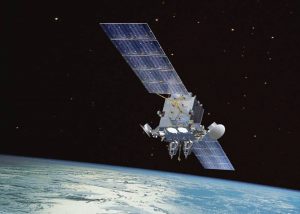By Ankit Panda
 Russia has conducted another test of its Nudol hit-to-kill interceptor, designed for anti-satellite missions, U.S. Space Command said in a statement on Wednesday. The test took place from Russia’s Plesetsk test site.
Russia has conducted another test of its Nudol hit-to-kill interceptor, designed for anti-satellite missions, U.S. Space Command said in a statement on Wednesday. The test took place from Russia’s Plesetsk test site.
The test, which involved the system known as PL19/Nudol, did not involve a live orbital target. U.S. officials criticized the test.
“This test is further proof of Russia’s hypocritical advocacy of outer space arms control proposals designed to restrict the capabilities of the United States while clearly having no intention of halting their counter-space weapons programs,” said Space Command’s chief Gen. Jay Raymond.
“Russia’s DA-ASAT test provides yet another example that the threats to U.S. and allied space systems are real, serious and growing,” Gen. Raymond added. “The United States is ready and committed to deterring aggression and defending the Nation, our allies and U.S. interests from hostile acts in space.”
Direct ascent anti-satellite weapons, or DA-ASATs, are designed to fly off the earth’s surface to intercept a satellite target in orbit. Only two countries have conducted live tests of DA-ASAT style weapons. In 2007, China faced international criticism for testing its SC-19 ASAT against a satellite, generating a massive debris field, parts of which will persist for decades.
In 2019, India conducted its first ASAT test using a Prithvi Defense Vehicle Mark II ballistic missile defense interceptor against a smaller satellite target at a lower altitude. Some pieces of trackable debris from the Indian test remain in orbit.
In 2008, the United States shot down a decaying National Reconnaissance Office satellite at a low altitude using an SM-3 interceptor in Operation Burnt Frost. The shootdown was described as a necessary measure to protect against debris from the satellite causing harm to humans.
Direct-ascent, hit-to-kill anti-satellite weapons and some ballistic missile defense systems have a shared technological heritage, with both relying on kinetic intercept of a target outside the earth’s atmosphere. The target missions differ however, with satellites in low-earth orbit traveling on an orbital plane while ballistic missile reentry vehicles use suborbital trajectories.
U.S. officials have recently expressed concerns about Russian co-orbital ASAT weapons as well. These are thought to be special satellites with a capability to change their orbits to approach adversary satellites. The U.S. Space Command statement announcing Russia’s Nudol test noted that the DA-ASAT test “comes on the heels of Russia’s on-orbit testing the U.S. highlighted in February, namely COSMOS 2542 and COSMOS 2543.”
The Diplomat first reported a 2018 test of the Nudol system, which was the first to employ a launch off a transporter-erector-launcher vehicle.
No comments:
Post a Comment